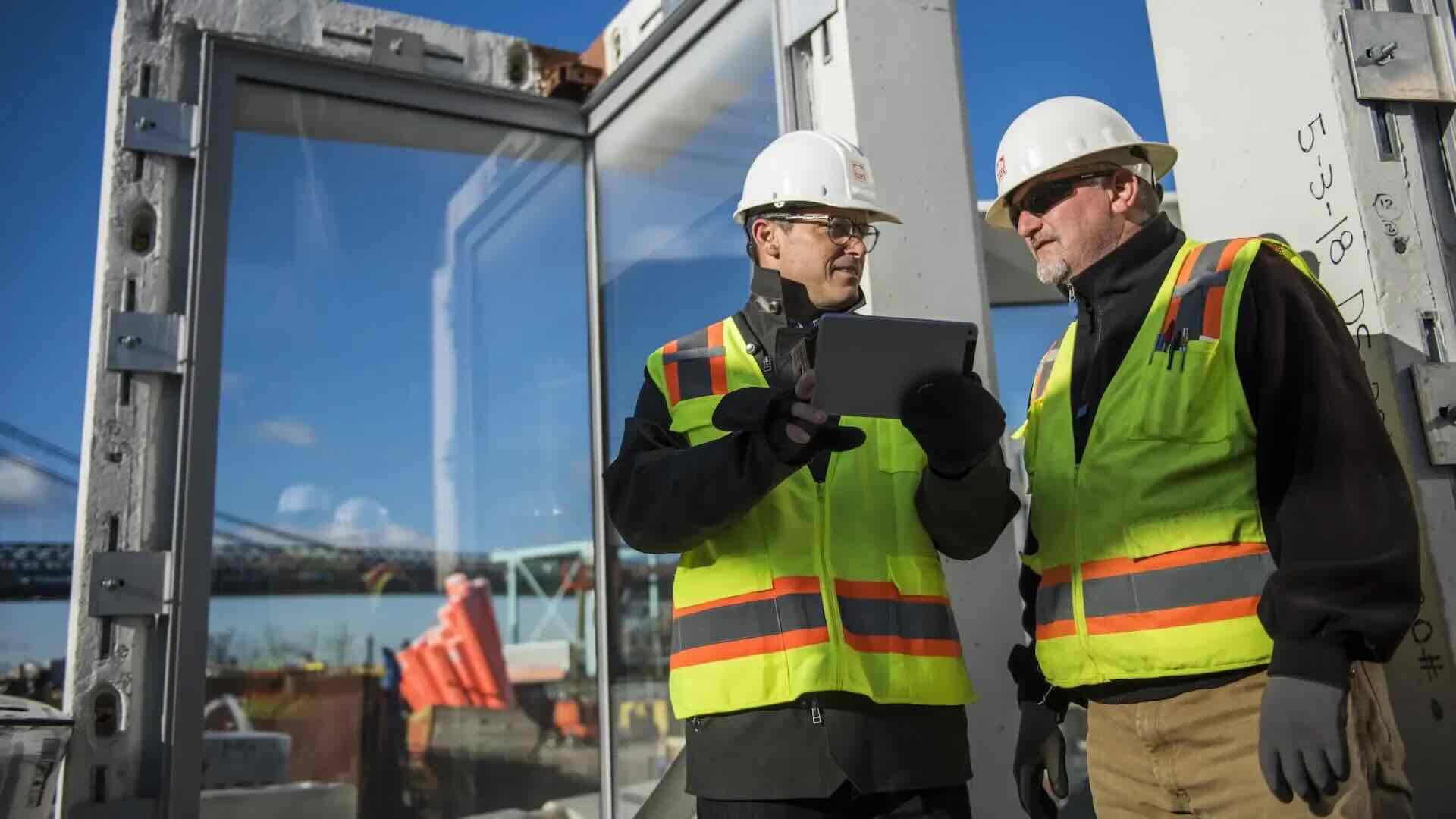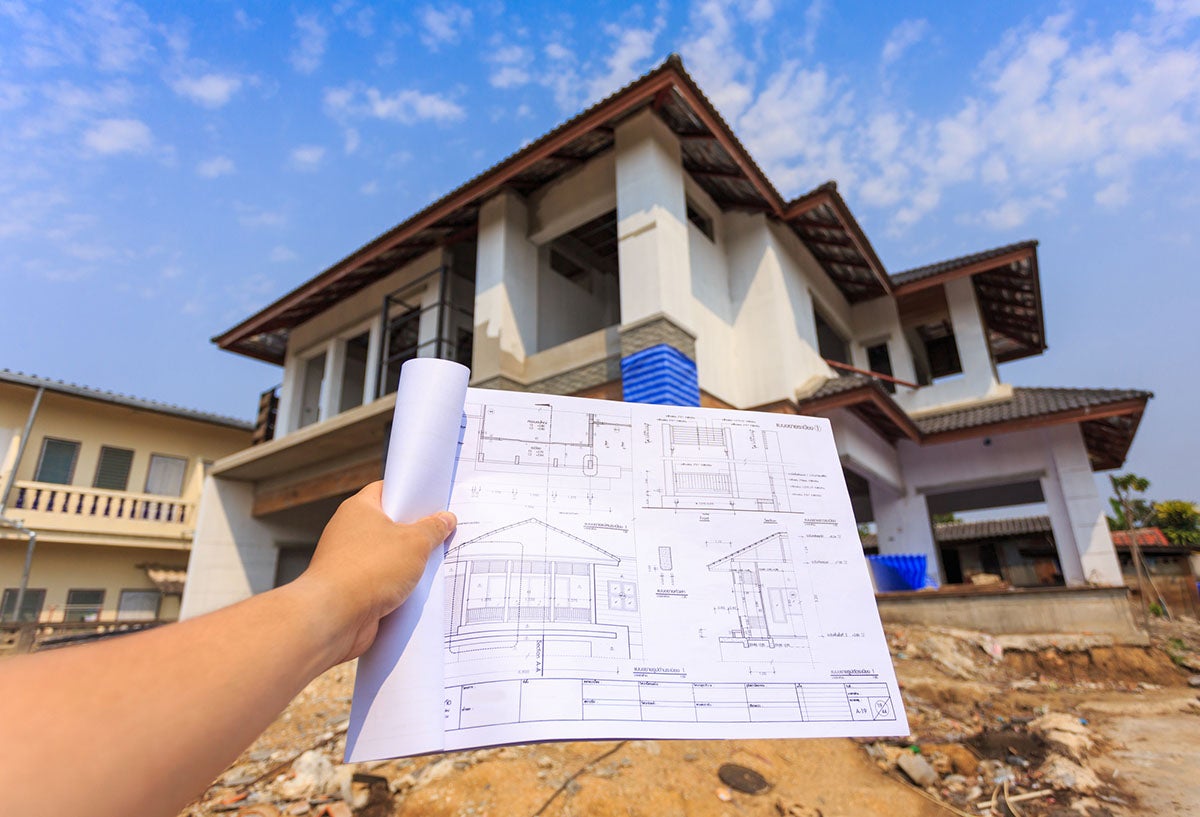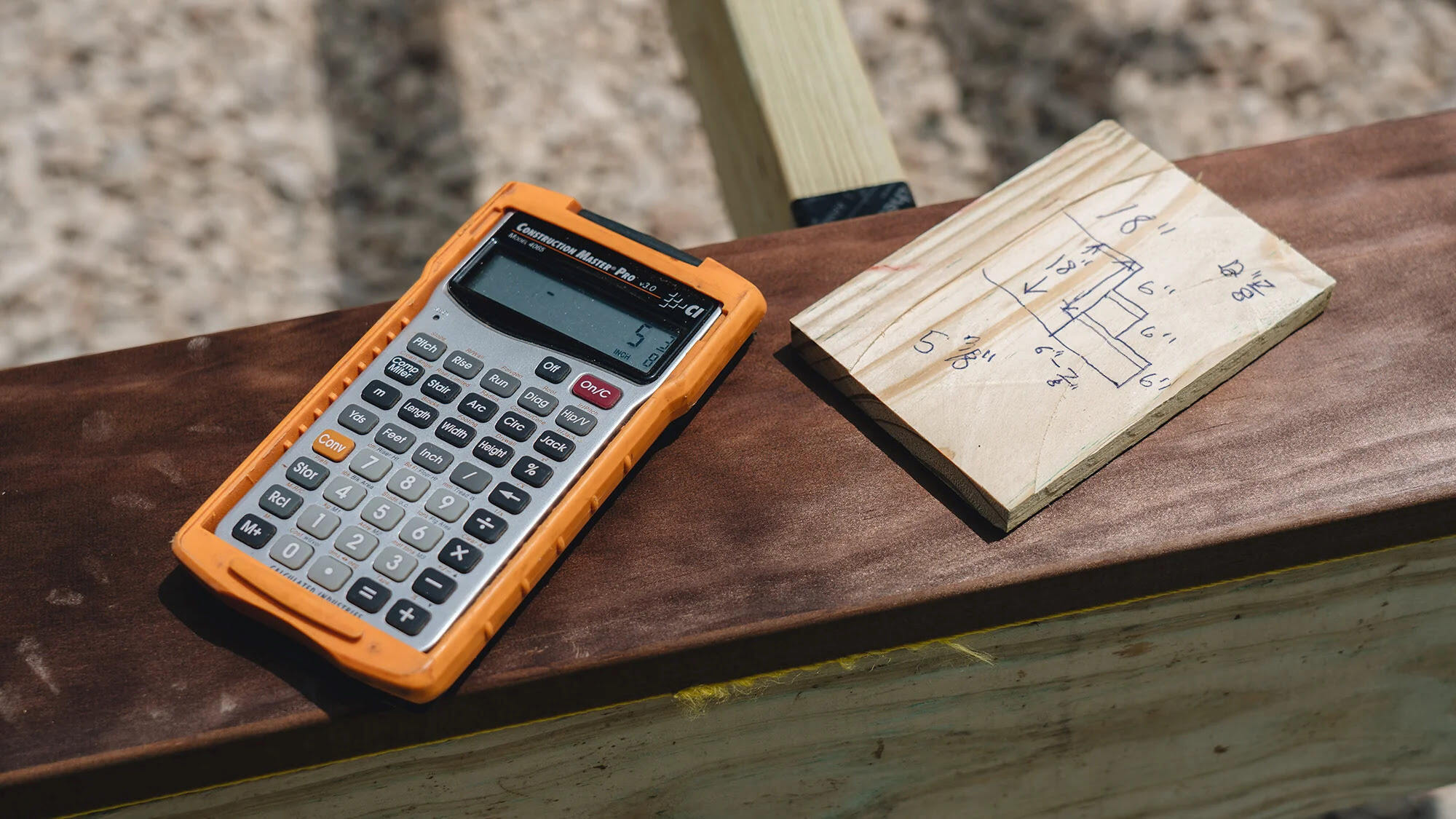Home>diy>Building & Construction>How To Calculate A Construction In Progress


Building & Construction
How To Calculate A Construction In Progress
Modified: January 9, 2024
Learn how to accurately calculate a building construction in progress with our step-by-step guide. Gain insights into costs and ensure successful project management.
(Many of the links in this article redirect to a specific reviewed product. Your purchase of these products through affiliate links helps to generate commission for Storables.com, at no extra cost. Learn more)
Introduction
Welcome to the world of construction! Construction projects are complex, requiring careful planning, execution, and monitoring. As a construction professional, it is crucial to have a clear understanding of various aspects of the construction process, including how to calculate construction in progress.
Construction in progress refers to the value of work that has been undertaken but is not yet completed. It represents the ongoing construction activity and includes costs such as labor, materials, and other related expenses. Calculating construction in progress is essential for financial reporting purposes, as it allows companies to accurately assess the value of the work completed and the unexpired cost of work in progress.
Calculating construction in progress plays a vital role in the construction industry for several reasons. First and foremost, it provides a clear picture of the financial health of a construction project. By accurately tracking the value of work completed, construction managers and stakeholders can assess the project’s progress and make informed decisions.
Furthermore, calculating construction in progress is key for financial reporting compliance. Various accounting standards and regulations, such as the Generally Accepted Accounting Principles (GAAP) and International Financial Reporting Standards (IFRS), require construction companies to disclose the value of work completed and the unexpired cost of work in progress.
Now that we understand the importance of calculating construction in progress, let’s explore the methods commonly used in the industry. There are several methods to choose from, and each has its own merits and drawbacks. Choosing the right method depends on factors such as the nature of the project, the availability of accurate cost data, and the preference of the company or accounting standards.
Key Takeaways:
- Accurate calculation of construction in progress is crucial for financial transparency, effective decision-making, and successful project outcomes in the construction industry.
- Considering direct costs, indirect costs, and overhead costs is essential for reliable calculations of construction in progress, enabling effective cost management and financial reporting compliance.
Read more: What Is Construction In Progress
Definition of Construction in Progress
Construction in progress refers to the ongoing construction activity that is yet to be completed and represents the value of work undertaken at any given point in time. It encompasses all the costs associated with the construction project, including labor, materials, equipment, and other related expenses.
Construction in progress is an important concept in the construction industry, as it allows companies to track the progress and value of work completed for financial reporting purposes. It provides a snapshot of the project’s financial health and helps stakeholders make informed decisions regarding budgeting, resource allocation, and project management.
Construction in progress is considered an asset on the company’s balance sheet, reflecting the value of the work completed but not yet invoiced or recognized as revenue. It represents the company’s investment in construction projects and is classified as a current or long-term asset depending on the estimated time to complete the project.
In addition to tracking the value of work completed, construction in progress also includes costs that are directly attributable to the construction project. These costs can include direct labor costs, materials and supplies, subcontractor fees, permits and licenses, equipment rentals, and other direct expenses incurred during the construction process.
It is important to note that construction in progress only includes costs directly related to the construction project. General overhead costs and administrative expenses that are not directly tied to the project are not included in the calculation of construction in progress.
By accurately calculating construction in progress, construction companies can assess the financial performance of their projects, monitor progress, and ensure compliance with accounting standards. It provides a clear picture of the value of work completed and the unexpired cost of work in progress, allowing companies to make informed decisions and manage their construction projects effectively.
Importance of Calculating Construction in Progress
Calculating construction in progress is of utmost importance in the construction industry for a variety of reasons. Let’s explore why accurately assessing the value of work completed and the unexpired cost of work in progress is crucial for construction companies:
- Financial Reporting: Calculating construction in progress is essential for financial reporting compliance. Various accounting standards, such as GAAP and IFRS, require construction companies to accurately disclose the value of work completed and the unexpired cost of work in progress. This ensures transparency and helps stakeholders, including investors and lenders, make informed decisions.
- Project Monitoring: By calculating construction in progress, construction professionals can monitor the progress of their projects. The value of work completed serves as a key indicator of project advancement and allows for effective project management. It helps identify any delays or underperformance, enabling timely intervention to keep the project on track.
- Budgeting and Resource Allocation: Accurate calculations of construction in progress provide valuable insights for budgeting and resource allocation. Knowing the value of work completed and the estimated remaining costs helps construction companies allocate resources appropriately, ensuring that sufficient funds are available to complete the project successfully.
- Cost Control: Calculating construction in progress allows for effective cost control. By comparing the value of work completed against the budgeted value, construction professionals can identify any cost overruns or deviations from the original plan. This enables them to take corrective actions and implement measures to manage costs effectively.
- Performance Evaluation: Construction in progress calculations serve as a basis for evaluating the financial performance of construction projects. By comparing the value of work completed to the planned schedule and budget, construction professionals can assess project efficiency and profitability. This evaluation helps identify areas for improvement and enables companies to enhance their overall performance.
In summary, calculating construction in progress is essential for financial reporting compliance, project monitoring, budgeting, resource allocation, cost control, and performance evaluation. It provides construction companies with valuable insights into their projects’ financial health and progress, enabling effective decision-making and ensuring successful project outcomes.
Methods for Calculating Construction in Progress
There are several methods commonly used in the construction industry to calculate construction in progress. Each method has its own advantages and is suitable for different types of projects. Let’s explore three widely used methods:
- Percentage of Completion Method: This method calculates construction in progress based on the percentage of work completed compared to the total estimated project cost. It involves assessing the progress of the project at a given time and determining the proportion of work completed. The calculation takes into account both the direct costs and the indirect costs allocated to the project. The percentage of completion can be measured using various criteria, such as the physical completion of work, the cost incurred, or the labor hours expended.
- Cost-to-Cost Method: The cost-to-cost method calculates construction in progress based on the ratio of costs incurred to the total estimated project costs. It compares the actual costs incurred up to a specific period with the total estimated costs of the project. The construction in progress is then determined by multiplying this ratio by the total estimated project cost. This method is commonly used when the project’s progress can be accurately measured by comparing the actual costs incurred.
- Modified Cost-to-Cost Method: The modified cost-to-cost method is a variation of the cost-to-cost method. It takes into consideration both the costs incurred and the estimated future costs to determine construction in progress. This method estimates the remaining costs based on the completion percentage and applies this estimate to the actual costs incurred. It provides a more accurate representation of the work completed and the unexpired cost of work in progress.
Each of these methods has its own benefits and limitations. The choice of method depends on factors such as the nature of the project, the availability of accurate cost data, and the preference of the company or accounting standards. It is important for construction professionals to carefully evaluate these factors and choose the most suitable method for calculating construction in progress.
By using these methods, construction companies can accurately track the value of work completed and the unexpired cost of work in progress. This enables them to make informed decisions, monitor project progress, manage costs effectively, and comply with financial reporting requirements.
Percentage of Completion Method
The Percentage of Completion method is a widely used method for calculating construction in progress. It involves determining the percentage of work completed in relation to the total estimated project cost. This method provides a more accurate representation of the value of work completed and the unexpired cost of work in progress. Let’s explore the key steps involved in using this method:
- Assessing the Progress: The first step is to assess the progress of the construction project. This can be done through various criteria, such as physical completion, cost incurred, or labor hours expended. The chosen criteria should accurately reflect the actual progress of the project.
- Determining the Completion Percentage: Based on the chosen criteria, the completion percentage is calculated. This percentage represents the proportion of work completed compared to the total estimated project cost. For example, if the total estimated project cost is $1,000,000 and the assessed progress indicates that 40% of the work has been completed, the completion percentage would be 40%.
- Calculating Construction in Progress: The calculated completion percentage is then applied to the total estimated project cost to determine the construction in progress. Continuing with the previous example, the construction in progress would be $1,000,000 multiplied by 40%, resulting in $400,000.
The Percentage of Completion method provides a reliable measure of the value of work completed and the unexpired cost of work in progress. It allows construction companies to have a clearer understanding of the project’s financial status, make informed decisions, and comply with financial reporting requirements.
However, it is important to note that this method requires accurate project cost tracking and progress assessment. Any inaccuracies in the estimated project cost or the assessed progress can lead to incorrect calculations and misleading financial reporting. Additionally, subjective judgment plays a role in determining the completion percentage, which may introduce some level of uncertainty.
Despite these considerations, the Percentage of Completion method remains a widely used and accepted approach for calculating construction in progress. It provides a systematic and standardized way to measure project progress and effectively manage the financial aspects of construction projects.
Read more: How To Monitor Construction Work Progress
Cost-to-Cost Method
The Cost-to-Cost method is another commonly used approach for calculating construction in progress. This method focuses on comparing the actual costs incurred to the total estimated project costs to determine the value of work completed and the unexpired cost of work in progress. Let’s delve into the key steps involved in using this method:
- Tracking Actual Costs: The first step is to track and record the actual costs incurred during the construction project. This includes direct costs, such as labor, materials, and equipment, as well as indirect costs related to the project.
- Estimating Total Project Costs: It is essential to have an accurate estimate of the total project costs. This estimate includes all costs associated with the construction project, including direct and indirect costs, and serves as the baseline for comparison.
- Calculating the Cost-to-Cost Ratio: The cost-to-cost ratio is determined by dividing the total actual costs incurred by the estimated total project costs. For example, if the total actual costs incurred are $500,000 and the estimated total project costs are $1,000,000, the cost-to-cost ratio would be 0.5 or 50%.
- Determining Construction in Progress: The construction in progress is calculated by multiplying the cost-to-cost ratio by the total estimated project costs. Continuing with the previous example, the construction in progress would be 50% of $1,000,000, resulting in $500,000.
The Cost-to-Cost method provides a straightforward approach to calculating construction in progress based on the ratio of costs incurred. It ensures that the value of work completed is proportional to the costs expended on the project. This method is particularly useful when actual costs can be accurately tracked and there are no significant deviations from the estimated project costs.
However, it is important to note that the Cost-to-Cost method relies heavily on cost data accuracy and assumes a linear relationship between costs incurred and the value of work completed. It may not account for factors such as changes in project scope or variations in cost efficiency as the project progresses.
Despite these considerations, the Cost-to-Cost method is widely utilized in the construction industry due to its simplicity and practicality. It provides a reliable measure of construction in progress, allowing construction professionals to effectively monitor project costs and comply with financial reporting requirements.
Modified Cost-to-Cost Method
The Modified Cost-to-Cost method is a variation of the Cost-to-Cost method. It takes into consideration both the costs incurred and the estimated future costs to determine the value of work completed and the unexpired cost of work in progress. This method provides a more accurate representation of the project’s financial status. Let’s explore the key steps involved in using this method:
- Tracking Actual Costs: As with the Cost-to-Cost method, the first step is to track and record the actual costs incurred during the construction project, both direct and indirect costs.
- Estimating Remaining Costs: It is crucial to estimate the remaining costs required to complete the construction project. This estimation can be based on the project’s progress, anticipated activities, and resource requirements.
- Calculating the Estimated Total Project Costs: The estimated total project costs are determined by summing up the actual costs incurred and the estimated remaining costs.
- Calculating the Cost-to-Total Cost Ratio: The cost-to-total cost ratio is calculated by dividing the actual costs incurred by the estimated total project costs. This ratio represents the proportion of costs incurred to the total project costs.
- Determining Construction in Progress: The construction in progress is calculated by multiplying the cost-to-total cost ratio by the estimated total project costs. This calculation captures both the work completed and the estimated cost of the remaining work.
The Modified Cost-to-Cost method provides a more accurate representation of construction in progress by considering the remaining costs needed to complete the project. This method is particularly useful when there are significant variations in cost efficiency throughout the project or when the original estimation of project costs has changed.
It is important to note that the Modified Cost-to-Cost method relies on accurate cost tracking and estimating remaining costs. Any inaccuracies in these estimations can lead to incorrect calculations and potentially misleading financial reporting. Subjective judgment is also involved in estimating the remaining costs, which introduces a level of uncertainty.
Despite these considerations, the Modified Cost-to-Cost method is widely used in the construction industry because it provides a more comprehensive view of the project’s financial performance. It allows construction professionals to manage costs effectively, make informed decisions, and comply with financial reporting requirements.
When calculating construction in progress, include all costs related to the construction project, such as materials, labor, and overhead expenses. Exclude any interest costs.
Factors to Consider When Calculating Construction in Progress
When calculating construction in progress, several factors must be taken into account to ensure accurate and reliable calculations. These factors help in determining the value of work completed and the unexpired cost of work in progress. Let’s explore three key factors that construction professionals should consider:
- Direct Costs: Direct costs are the expenses directly attributable to the construction project, such as labor, materials, equipment, and subcontractor fees. It is important to accurately track and allocate these costs to the project when calculating construction in progress. Proper documentation and record-keeping of direct costs help ensure that the value of work completed is accurately reflected.
- Indirect Costs: Indirect costs are the expenses that are indirectly related to the construction project but still contribute to its overall cost. These costs can include general project overheads, site supervision, insurance, permits, licenses, and utilities. While not directly tied to the project, they are essential for its execution. Construction professionals should carefully attribute and allocate these costs to the project to determine the unexpired cost of work in progress.
- Overhead Costs: Overhead costs are the ongoing expenses incurred by the construction company to support the construction project, including employee salaries, office rent, utilities, and administrative costs. While not directly tied to a specific project, these costs need to be considered when calculating construction in progress. They are typically allocated based on a predetermined overhead rate determined by the company’s accounting practices.
It is crucial to carefully analyze and track these factors to ensure accurate calculations of construction in progress. By considering direct costs, indirect costs, and overhead costs, construction professionals can provide a comprehensive picture of the project’s financial status and meet financial reporting requirements.
Additionally, it is essential to distinguish between capital expenditures and revenue expenses. While capital expenditures contribute to the construction in progress, revenue expenses should be recognized as incurred and not included in the calculation. Proper categorization of costs ensures that the calculation accurately represents the value of work completed and the unexpired cost of work in progress.
Moreover, the accuracy of cost data and the reliability of progress assessments play significant roles in calculating construction in progress. Construction professionals should ensure that cost tracking systems are in place, accurate, and up-to-date. Regular progress assessments should be conducted to determine the actual progress of the project and adjust the calculations accordingly.
By carefully considering these factors, construction professionals can accurately calculate construction in progress, manage project costs effectively, and provide reliable financial information to stakeholders and regulatory bodies.
Direct Costs
Direct costs are an essential factor to consider when calculating construction in progress. These costs are directly attributable to the construction project and include expenses related to labor, materials, equipment, and subcontractor fees. Accurately tracking and allocating direct costs is crucial for determining the value of work completed and the unexpired cost of work in progress. Let’s delve into the key aspects of direct costs:
Labor: Labor costs encompass the wages or salaries of the workers involved in the construction project. This includes the cost of both permanent employees and temporary workers hired specifically for the project. It is important to accurately record the hours worked and the corresponding labor rates to determine the labor costs associated with the project.
Materials: Material costs include the expenses incurred for purchasing construction materials necessary for the project. This can include items such as bricks, steel, cement, plumbing fixtures, electrical wiring, and more. Accurate tracking of material costs is essential to determine the value of the materials used in the construction process.
Equipment: Equipment costs involve the expenses related to the rental or purchase of machinery, tools, and equipment necessary for the construction project. This includes the cost of equipment used directly in the construction process, such as excavators, cranes, and concrete mixers. It is crucial to accurately allocate equipment costs to the project based on the duration of usage or the specific tasks performed.
Subcontractor Fees: Subcontractor fees represent the costs associated with hiring and outsourcing specialized tasks to subcontractors. This can include subcontractors for specific trades such as plumbing, electrical work, carpentry, or painting. It is important to keep a record of the subcontractor agreements, invoices, and payments to accurately allocate these costs to the project.
Accurate documentation and record-keeping of direct costs are crucial for calculating construction in progress. This helps ensure that the value of work completed reflects the actual costs incurred for labor, materials, equipment, and subcontractor services. Additionally, it allows for effective cost tracking and management throughout the construction project.
It is important to note that any changes or variations in direct costs throughout the project should be carefully tracked and accounted for. Any adjustments in direct costs should be accurately reflected in the calculation of construction in progress to ensure the reliability and accuracy of financial reporting.
By carefully considering direct costs and accurately tracking them, construction professionals can determine the value of work completed and the unexpired cost of work in progress. This enables effective financial management, decision-making, and compliance with financial reporting requirements in the construction industry.
Read more: How To Record Construction In Progress
Indirect Costs
When calculating construction in progress, it is essential to consider indirect costs. Indirect costs are expenses that are indirectly related to the construction project but still contribute to its overall cost. These costs are necessary for supporting and sustaining the construction project. Properly accounting for indirect costs ensures accurate determination of the unexpired cost of work in progress. Let’s explore the key aspects of indirect costs:
General Project Overheads: General project overhead costs include expenses that are incurred to support the construction project as a whole. These costs can include office rent, utilities, insurance, project management fees, and legal fees. While these costs may not be directly tied to a specific activity or task within the construction project, they are essential for its smooth operation.
Site Supervision: Site supervision costs involve the expenses associated with supervising and managing the construction site. This includes the salaries or fees of project managers, site supervisors, and other personnel responsible for overseeing the construction activities. Site supervision costs ensure effective coordination, adherence to safety regulations, and efficient project execution.
Permits and Licenses: Construction projects often require various permits and licenses to comply with local regulations and building codes. The costs associated with obtaining these permits and licenses should be accounted for as indirect costs. This can include fees for building permits, zoning permits, environmental permits, and other required regulatory approvals.
Utilities: Utilities costs encompass expenses related to the consumption of water, electricity, gas, and other utilities on the construction site. This includes temporary connections or services required during the construction phase. Accurately tracking these costs ensures that they are properly allocated to the construction project.
Security: Security costs cover measures taken to secure the construction site, including hiring security personnel, installing security systems, and implementing safety protocols. These costs contribute to the overall project cost and should be included as indirect costs when calculating construction in progress.
Accurately accounting for indirect costs is crucial for determining the unexpired cost of work in progress. These costs, although not directly tied to specific construction activities, are essential for the successful execution of the project. Proper allocation and tracking of indirect costs contribute to accurate financial reporting and effective cost management.
It is important to note that the allocation of indirect costs may vary based on the accounting practices and the specific requirements of the construction project. Construction professionals should ensure that the allocation methods used for indirect costs are consistent, transparent, and comply with relevant accounting standards.
By considering indirect costs and accurately allocating them, construction professionals can effectively calculate construction in progress, accurately represent the project’s financial status, and ensure compliance with financial reporting requirements.
Overhead Costs
Overhead costs are a critical factor to consider when calculating construction in progress. These costs are ongoing expenses incurred by the construction company to support the construction project, though they may not be directly tied to a specific project task or activity. Properly accounting for overhead costs is essential for accurately determining the unexpired cost of work in progress. Let’s explore the key aspects of overhead costs:
Employee Salaries: Employee salaries include the wages or salaries of office staff, project managers, administrative personnel, and other employees involved in supporting the construction project. These costs are necessary for the day-to-day operations of the construction company and are allocated as overhead costs. Proper documentation and accurate allocation of employee salaries ensure that overhead costs are accounted for correctly.
Office Rent and Utilities: Office rent and utilities include the expenses associated with leasing office space, such as rent, property taxes, and maintenance costs. Utility expenses, such as electricity, water, and internet services used in the office, are also considered overhead costs. These expenses support the administrative functions and general operations of the construction company.
Office Supplies and Equipment: Costs related to office supplies, such as stationery, printing materials, computers, and software, are considered overhead costs. Additionally, the maintenance and depreciation expenses of office equipment, such as printers, copiers, and computers, are included in the overhead costs. These supplies and equipment support the administrative tasks and overall functioning of the construction company.
Marketing and Advertising: Marketing and advertising expenses, including promotional activities, advertising campaigns, website maintenance, and the cost of marketing materials, are considered overhead costs. These costs are necessary for promoting the construction company and securing new projects, contributing to its overall operations.
Insurance and Taxes: Insurance premiums and taxes, such as property insurance, liability insurance, and business taxes, are part of the overhead costs. These costs provide essential coverage and ensure compliance with legal and regulatory obligations, protecting the construction company’s interests and assets.
Accurate allocation and tracking of overhead costs are crucial for calculating construction in progress. These costs are necessary for the day-to-day functioning of the construction company and indirectly contribute to the construction project’s success. Proper documentation and transparent allocation methods play a significant role in the accurate representation of overhead costs.
It is important to note that the allocation of overhead costs may vary based on the accounting practices and specific requirements of the construction company. Construction professionals should ensure that the allocation methods used for overhead costs are consistent, fair, and comply with relevant accounting standards.
By considering overhead costs and accurately allocating them, construction professionals can effectively calculate construction in progress, provide a comprehensive view of the project’s financial status, and ensure compliance with financial reporting requirements.
Examples of Calculating Construction in Progress
Let’s explore some examples of calculating construction in progress using different methods. These examples will provide insight into how construction professionals can determine the value of work completed and the unexpired cost of work in progress during various stages of a construction project:
Example 1: Percentage of Completion Method
In this example, consider a construction project with an estimated total cost of $1,000,000. After assessing the project’s progress, it is determined that 60% of the work has been completed. Using the Percentage of Completion method:
- Percentage of Completion: 60%
- Construction in Progress = $1,000,000 * 60% = $600,000
Therefore, the construction in progress for this project is $600,000.
Example 2: Cost-to-Cost Method
In this example, consider a construction project with actual costs incurred to date of $300,000 and an estimated total project cost of $500,000. Using the Cost-to-Cost method:
- Cost-to-Cost Ratio: $300,000 / $500,000 = 0.6 or 60%
- Construction in Progress = 0.6 * $500,000 = $300,000
The construction in progress for this project is thus $300,000.
Example 3: Modified Cost-to-Cost Method
For this example, consider a construction project with actual costs incurred to date of $200,000 and estimated remaining costs of $400,000. Using the Modified Cost-to-Cost method:
- Estimated Total Project Costs: $200,000 (actual costs incurred) + $400,000 (estimated remaining costs) = $600,000
- Cost-to-Total Cost Ratio: $200,000 / $600,000 = 0.33 or 33%
- Construction in Progress = 0.33 * $600,000 = $198,000
Therefore, the construction in progress for this project is $198,000.
These examples illustrate the application of different methods for calculating construction in progress. Construction professionals must carefully assess the project’s progress, determine the appropriate method to use, and accurately consider the costs incurred and estimated remaining costs to obtain reliable calculations.
It is important to note that these examples are simplified for illustrative purposes. In practice, projects may involve more complex cost structures, variations in progress assessment, and additional factors that need to be considered during the calculation of construction in progress.
By using the appropriate method and accurately considering the project’s cost data and progress, construction professionals can determine the value of work completed and the unexpired cost of work in progress. This enables effective cost management, financial reporting, and decision-making in the construction industry.
Conclusion
Calculating construction in progress is a crucial aspect of the construction industry. It allows construction professionals to accurately determine the value of work completed and the unexpired cost of work in progress. By considering various factors, such as direct costs, indirect costs, and overhead costs, construction companies can provide a comprehensive picture of their project’s financial status and make informed decisions.
The methods for calculating construction in progress, including the percentage of completion method, cost-to-cost method, and modified cost-to-cost method, offer different approaches to determining the value of work completed and the unexpired cost of work in progress. Each method has its advantages and suitability based on the project’s nature, the availability of cost data, and accounting standards. Construction professionals should carefully evaluate these factors to choose the most appropriate method for their projects.
Accurate tracking and allocation of direct costs, such as labor, materials, equipment, and subcontractor fees, are crucial for determining the value of work completed. Indirect costs, including general project overheads, site supervision, permits and licenses, and utilities, must also be accounted for to calculate the unexpired cost of work in progress. Additionally, overhead costs, such as employee salaries, office rent and utilities, office supplies, and marketing expenses, contribute to the overall construction project cost and should be considered.
Examples of calculating construction in progress demonstrate the application of different methods and how they help determine the project’s financial status at different stages. These examples serve as a guide for construction professionals in accurately assessing their projects’ progress and making reliable calculations.
In conclusion, calculating construction in progress is vital for financial reporting compliance, project monitoring, budgeting, resource allocation, cost control, and performance evaluation. Accurate calculations provide construction companies with valuable insights into their projects’ financial health, allowing for effective decision-making and successful project outcomes.
By considering the factors discussed in this article and utilizing the appropriate calculation methods, construction professionals can effectively manage project costs, ensure financial transparency, and contribute to the success of their construction projects.
Frequently Asked Questions about How To Calculate A Construction In Progress
Was this page helpful?
At Storables.com, we guarantee accurate and reliable information. Our content, validated by Expert Board Contributors, is crafted following stringent Editorial Policies. We're committed to providing you with well-researched, expert-backed insights for all your informational needs.














0 thoughts on “How To Calculate A Construction In Progress”